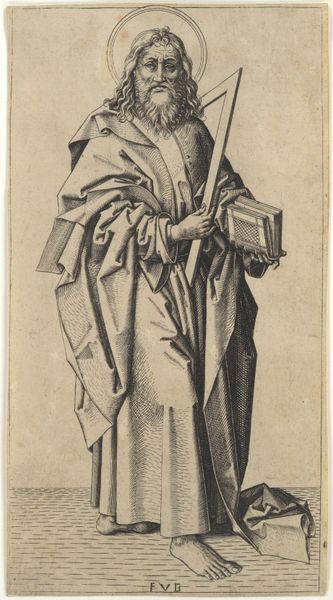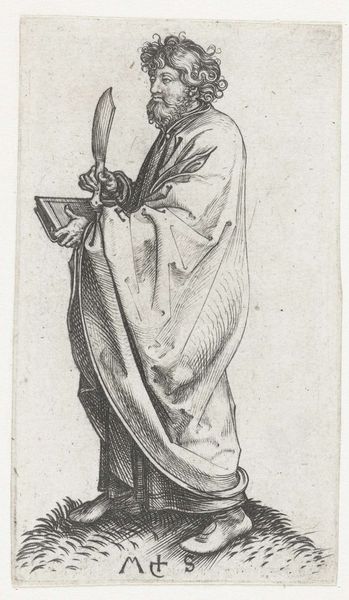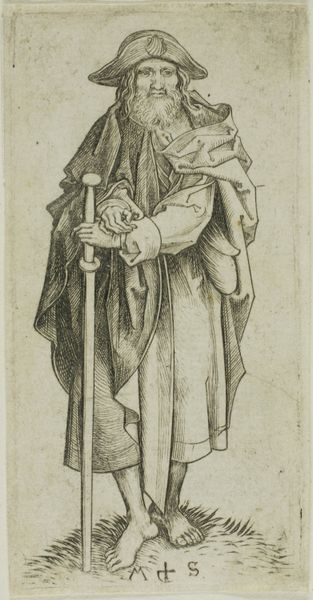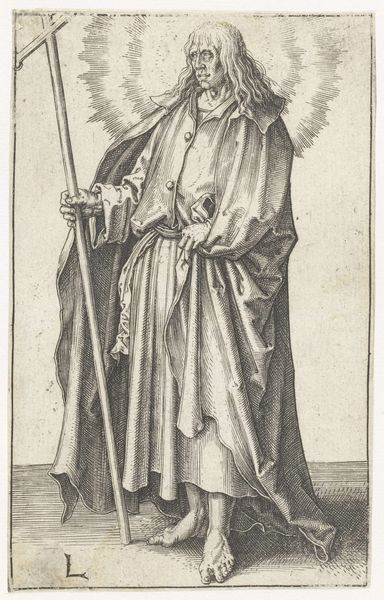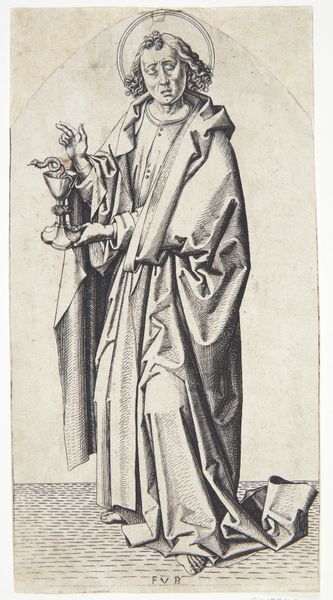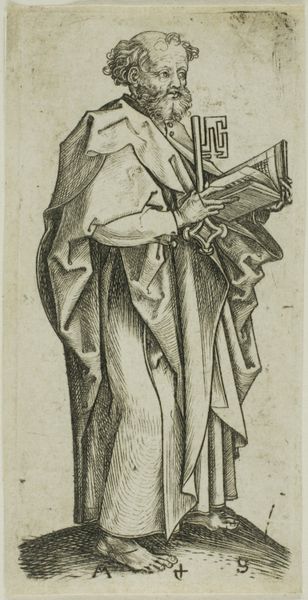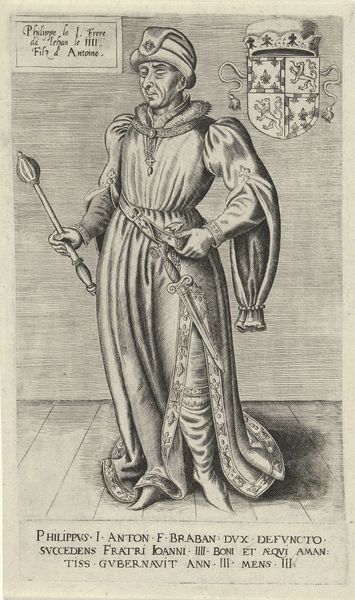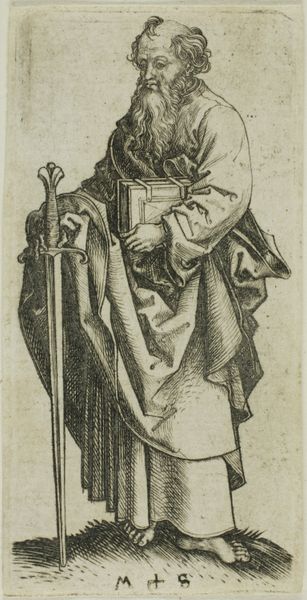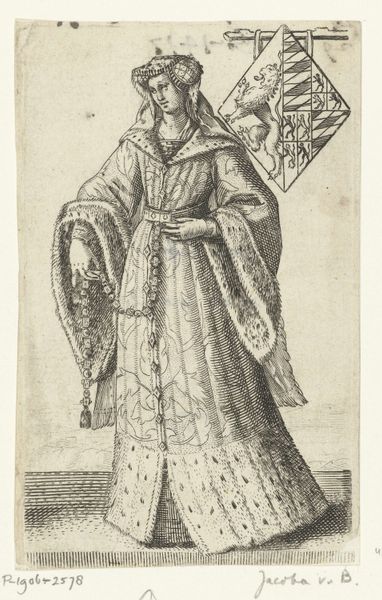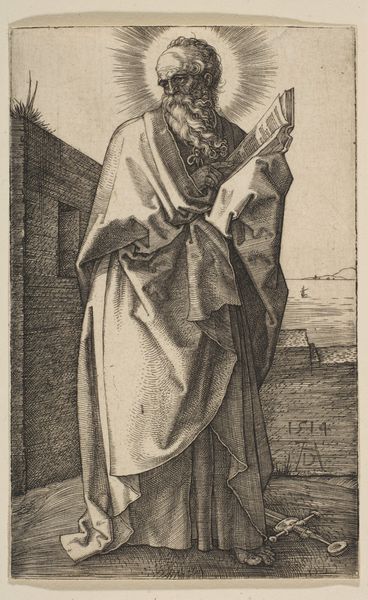
print, engraving
#
portrait
# print
#
figuration
#
line
#
portrait drawing
#
history-painting
#
northern-renaissance
#
engraving
Copyright: National Gallery of Art: CC0 1.0
Curator: Here we have Martin Schongauer's "Saint John the Evangelist," an engraving dating back to about 1480. The piece renders the saint standing, draped in heavy robes, with a chalice bearing a serpent beside him. Editor: My initial reaction is to the level of detail! The density of the cross-hatching creates this deeply textured surface and dramatic play of light and shadow. Curator: Schongauer was a master of line, wasn't he? He uses it to construct not just form, but also a compelling symbolic language. Note the chalice with the serpent. Editor: Yes, and this is no random pairing. The chalice, of course, references the Eucharist and sacrifice, while the serpent carries multiple symbolic layers. It represents evil and temptation, but also knowledge and healing. It's almost an act of defiance, this positioning of a chalice bearing the instrument of the fall! Curator: Exactly. According to the legend, Saint John was given poisoned wine, which miraculously purged the poison. The serpent thus becomes associated with his ability to overcome toxicity. Editor: That makes you wonder about the meaning that images held for different groups of people living at the time. How would it affect the public differently depending on who was the audience for it. How was an object such as that intended to operate within its socio-cultural context? Curator: And the lines themselves almost vibrate with energy. The engraving captures a moment of transcendence, but also deep, internal reflection. Editor: True, he's almost caught in contemplation, not presenting himself with authority, but rather almost turning inward toward something more complex. It’s a very intimate, almost vulnerable, depiction for a saint often associated with powerful visions. Curator: There's an undeniable humanity to his interpretation, even though he's swathed in these ornate robes. He really succeeds in capturing both the worldly and the spiritual within a single figure. Editor: Looking at this through a modern lens, I'm struck by the ongoing dialogue between tradition and innovation in Schongauer's work. This is very useful in understanding history because it shows a time period as one with struggles for dominance over what becomes the dominant culture. Curator: Absolutely. It’s a small piece, but the levels of visual and symbolic communication is monumental. Editor: A great reflection on the enduring power of symbolism in a moment in European history where shifts of cultural practices began to shape an identity as distinct from other continents.
Comments
No comments
Be the first to comment and join the conversation on the ultimate creative platform.
